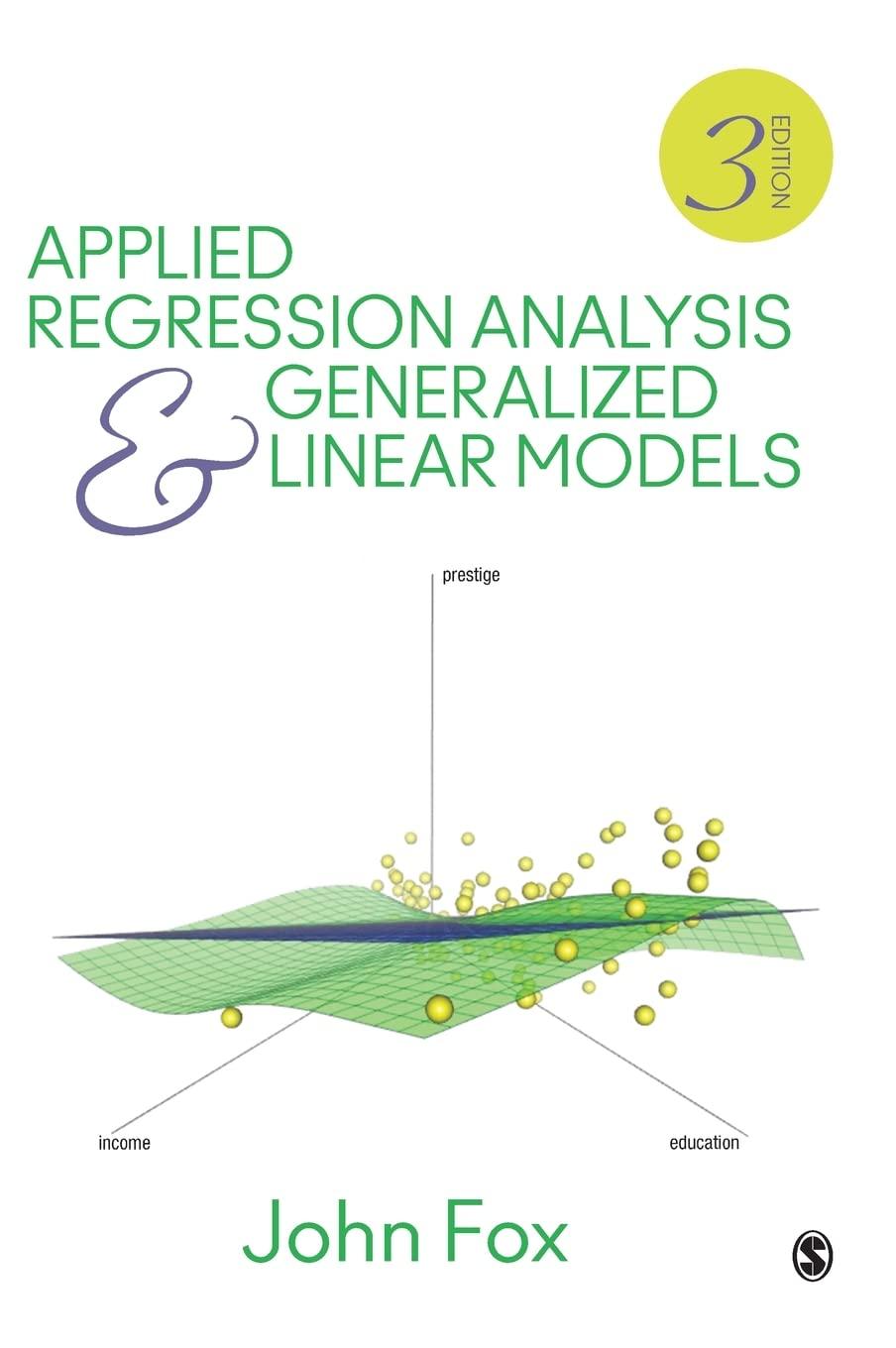'Bootstrapping time-series regression: Bootstrapping can be adapted to timeseries regression but, as in the case of fixed-X...
Question:
'Bootstrapping time-series regression: Bootstrapping can be adapted to timeseries regression but, as in the case of fixed-X resampling, the procedure makes strong use of the model fit to the data—in particular, the manner in which serial dependency in the data is modeled. Suppose that the errors in the linear model y ¼ Xfl þ " follow a first-order autoregressive process (see Chapter 16), εi ¼ rεi#1 þ yi; the yi are independently and identically distributed with 0 expectations and common variance σ2 y . Suppose further that we use the method of maximum likelihood to obtain estimates br and flb. From the residuals e ¼ y # Xflb, we can estimate yi as Vi ¼ Ei # brEi#1 for i ¼ 2; ... ; n; by convention, we take V1 ¼ E1. Then, for each bootstrap replication, we sample n-values with replacement from the Vi; call them V'
b1, V'
b2; ... ; V'
bn. Using these values, we construct residuals E'
b1 ¼ V'
b1 and E'
bi ¼ brE'
b; i#1 þ V'
bi for i ¼ 2; ... ; n; and from these residuals and the original fitted values Ybi ¼ x0 iflb, we construct bootstrapped Y-values, Y'
bi ¼ Ybi þ E'
bi. The Y'
bi are used along with the original x0 i to obtain bootstrap replicates flb'
b of the ML coefficient estimates. (Why are the x0 i treated as fixed?)
Employ this procedure to compute standard errors of the coefficient estimates in the time-series regression for the Canadian women’s crime rate data (discussed in Chapter 16), using an AR(1) process for the errors. Compare the bootstrap standard errors with the usual asymptotic standard errors. Which standard errors do you prefer? Why? Then describe a bootstrap procedure for a time-series regression model with AR(2) errors, and apply this procedure to the Canadian women’s crime rate regression.
Step by Step Answer:

Applied Regression Analysis And Generalized Linear Models
ISBN: 9781452205663
3rd Edition
Authors: By John Fox





